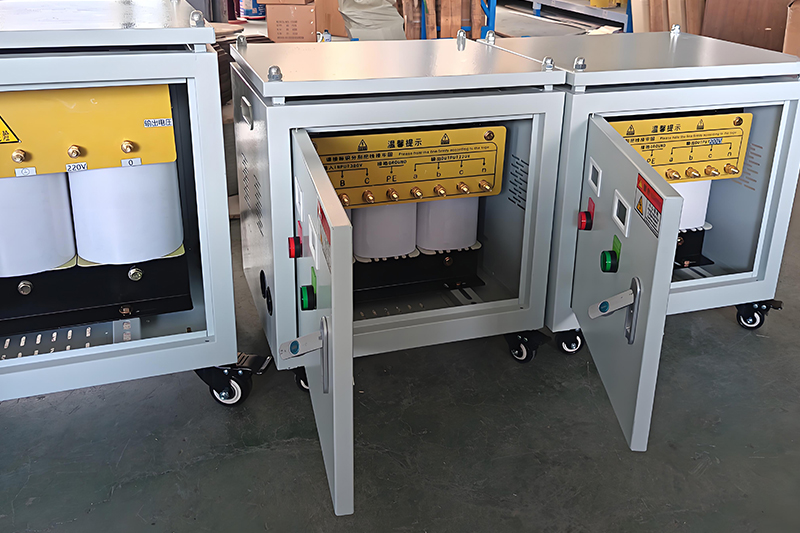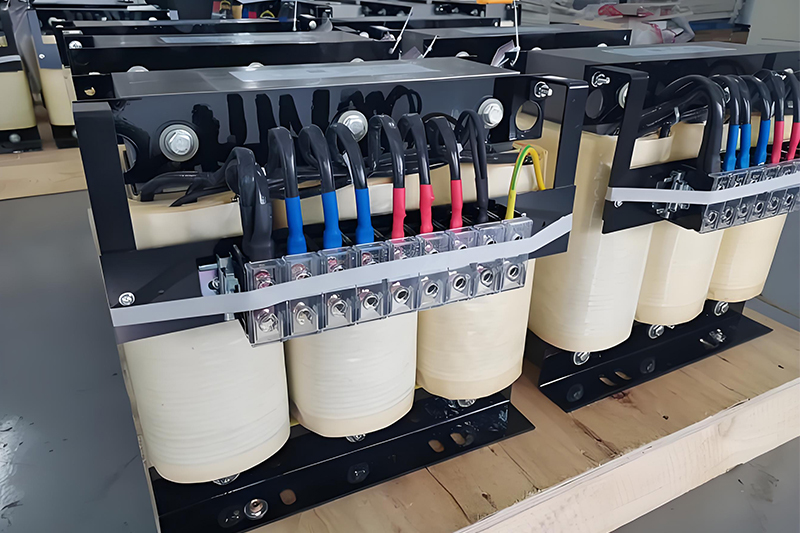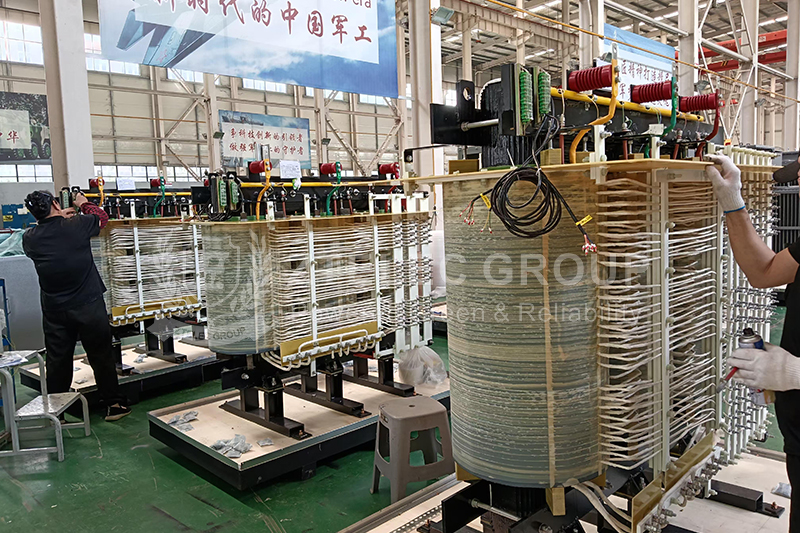Are Three-Phase Isolation Dry-Type Transformers the Power Safety Shield? 380V to 220V Conversion Performance Explained
In modern industrial environments such as factories, laboratories, and construction sites, the 380V three-phase power supply is the main energy source. However, power systems often face safety risks such as lightning strikes, voltage fluctuations, harmonic interference, and accidental contact with live wires. These risks can cause serious damage to equipment and even endanger personnel safety. To address these challenges, three-phase isolation dry-type transformers serve as a reliable solution that provides both electrical safety and power quality purification.
This article explains the working principles of three-phase isolation dry-type transformers and presents performance test results demonstrating their 380V to 220V conversion efficiency and stability.

1. What Is a Three-Phase Isolation Dry-Type Transformer?
A three-phase isolation dry-type transformer is an electrical device that uses the principle of electromagnetic induction to isolate the input 380V power supply from the output power circuit. This isolation prevents direct electrical contact between the primary and secondary sides, ensuring both operational safety and power stability.
Electrical Isolation Principle
In ordinary transformers, input and output windings may be electrically connected, posing risks if insulation fails. By contrast, the primary and secondary windings of an isolation transformer are completely independent, transferring energy solely through magnetic coupling. In an ungrounded environment, accidental human contact with the secondary side will not complete an electrical circuit, greatly reducing electric shock risk.
Power Purification Function
Three-phase isolation dry-type transformers also filter out electrical noise and interference from the grid. They effectively suppress surges, harmonics, and transient spikes, delivering a smooth and stable voltage output that protects sensitive electronic equipment.
Advantages of Dry-Type Design
Unlike oil-immersed transformers, dry-type isolation transformers use solid insulation materials such as epoxy resin. They are fireproof, explosion-proof, oil-free, and maintenance-free, making them ideal for indoor environments, high-rise buildings, and areas requiring high fire safety standards.
2. 380V to 220V Conversion Test and Results
In a 380V three-phase system, the voltage between any phase and the neutral line is 220V. The following test was conducted to evaluate the transformer’s conversion performance and voltage stability.
Test Configuration
Equipment: 10kVA three-phase isolation dry-type transformer, precision multimeter, oscilloscope, and 2kW resistive load.
Input: Standard 380V industrial power supply with ±1% voltage fluctuation.
Objective: Measure secondary-side voltage and waveform to confirm stable 220V output performance.
Test Results
No-Load Voltage: Input voltage measured at 381V (phase-to-phase), while the output between any phase and neutral remained at 220V ±0.5%, confirming accurate winding design.
Load Voltage: Under a 2kW load, voltage decreased slightly from 220V to 218V—a mere 1% drop, well within the ±5% industry tolerance. This demonstrates excellent voltage regulation and load stability.
Waveform Quality: Oscilloscope readings showed that grid input contained minor distortion, while the transformer output waveform was smooth and distortion-free, proving its strong harmonic suppression capability.
Conclusion
The test confirmed that three-phase isolation dry-type transformers provide safe, efficient, and stable 380V to 220V voltage conversion. They not only meet voltage accuracy requirements under various load conditions but also filter out grid interference, ensuring clean and reliable power for sensitive equipment.

3. Application Scenarios
Thanks to their isolation protection, voltage stabilization, and noise suppression capabilities, three-phase isolation dry-type transformers are widely applied in:
Industrial Automation: Powering PLC controllers, touch panels, sensors, and servo systems to prevent malfunction caused by voltage disturbances.
Medical Equipment: Providing clean and stable power for X-ray machines, ultrasound scanners, and operating room devices, ensuring diagnostic accuracy and operator safety.
Laboratories and Testing Facilities: Supplying reference-grade power for precision instruments and analytical equipment to ensure measurement consistency.
Old Workshop Renovations: Enhancing electrical safety in facilities with outdated TN-C grounding systems by adding isolation protection and reducing electric shock hazards.
4. Why Three-Phase Isolation Transformers Matter
More than just voltage conversion devices, three-phase isolation dry-type transformers act as a “power safety shield.” By providing complete electrical isolation and high-efficiency power purification, they safeguard operators, extend equipment lifespan, and create a stable, safe working environment.
Contact our engineering team today to customize a reliable and energy-efficient three-phase isolation dry-type transformer solution tailored to your project requirements.
- more+releated article
- 2025-10-21Application of K Factor Transformer
- 2025-10-21Detailed explanation about transformer model w
- 2025-10-2010kV Oil-Immersed Transformer Safety: Lightnin
- 2025-10-20What are The Advantages of Phenolic Cotton Clo
- 2025-10-17Are Three-Phase Isolation Dry-Type Transformer
- 2025-10-17G10 Epoxy Sheet: Choosing the Right Specificat
- 2025-10-1610kV Oil-Immersed Transformer Operation Inspec
- 2025-10-163240-B Epoxy Phenolic Glass Fiber Cloth Lamina
- 2025-10-15G10 Epoxy Sheet: The Preferred Insulation Mate
- 2025-10-15Analysis of Energy-Saving and Noise Control Te





